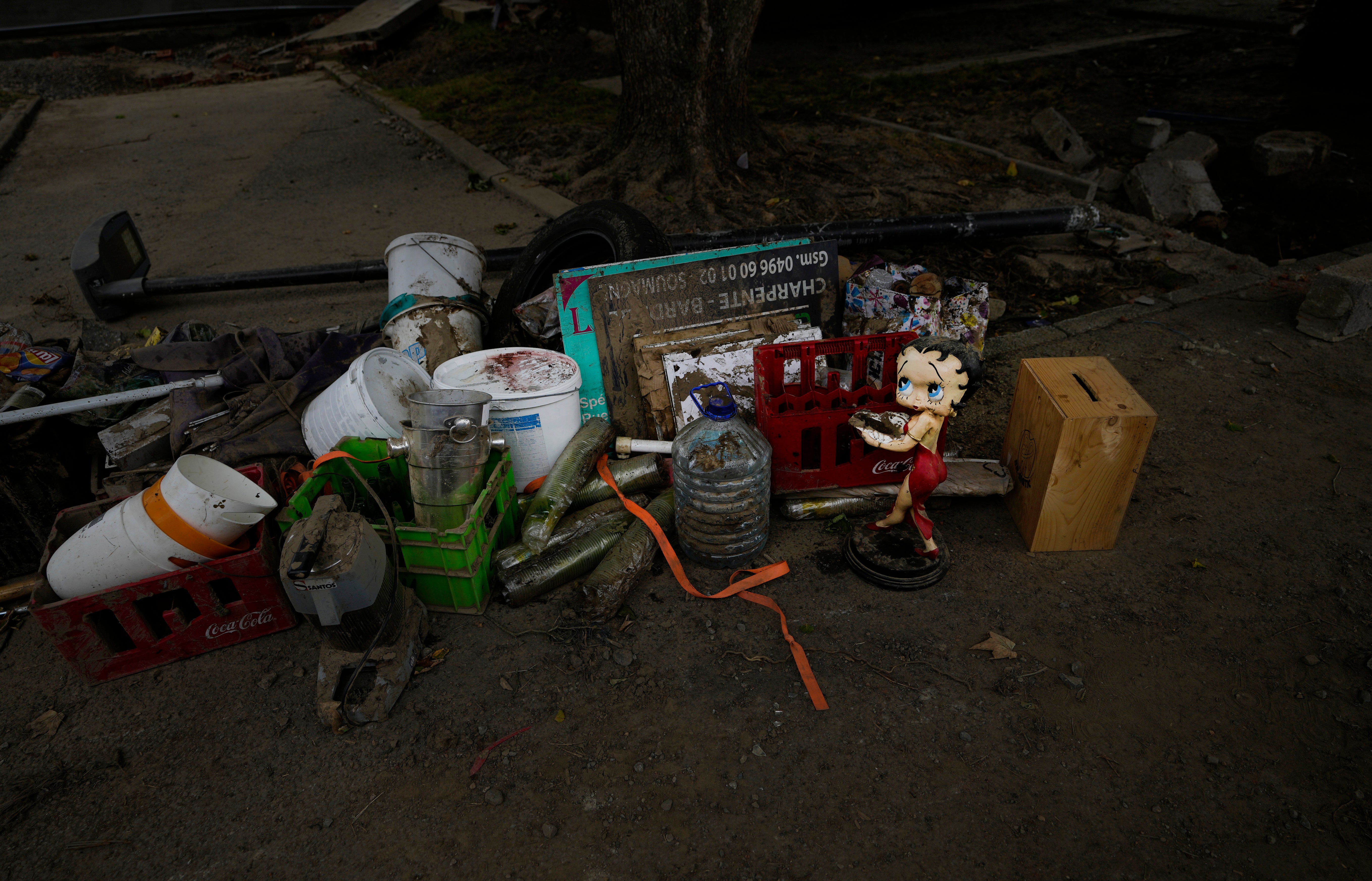Flooding is becoming more common – and you may need to insure your home against it
Installing water-resilient measures to minimise the damage could also be an option

From heatwaves to flash flooding, extreme weather conditions are becoming more common but if they cause damage to your home, what can you do if you can’t find insurance?
After a week-long heatwave, thunderstorms rocked the UK last week, followed by flash flooding – including along my street.
But these increasingly common incidents are having a damaging impact on UK homes, many of which are not designed to sustain extreme weather conditions.
One in five properties are currently at risk of at least one type of flooding, according to data from Aviva, and since 2016 more than 570,000 homes have been built which will not be resilient to future high temperatures.
The problem doesn’t seem to be abating either.
The number of properties built on floodplains is likely to double to 4.6 million over the next 50 years, according to the Environment Agency.
At the same time, it predicts that the UK will experience a 59 per cent increase in rainfall and a rise of 7.4C in summer temperatures by 2050.
As the climate crisis worsens, and we experience more extreme weather, there are predictions that millions of homes will be damaged or destroyed in the future.
The World Wide Fund for Nature (WWF) has predicted that if nothing changes, and a “business as usual” approach is taken, a repeat of the 2013 winter floods in 2050 would affect 2.5million homes, 770,000 non-residential properties and more than 1,000 schools.
Aviva is now calling for urgent action from a range of groups, including insurers, the government, and local authorities to protect the future of British homes and communities.
The insurer recommends several measures it wants to see put into action. These include strengthening local planning laws, targeted measures to make insurance more affordable to those most at risk of climate change, and a streamlined crisis response across the UK.
It says it is clear climate change is already affecting the UK and in February 2020, when there was severe flooding, the insurer received almost a year’s worth of claims in just one month.
Yet despite this, it’s not some most consumers are planning or preparing for.
Around 38 per cent of us believe climate change will impact our homes in the next year, and 57 per cent of us think we will see it in the next decade.
Sometimes people can believe that their home is uninsurable because they have restricted their insurance search to price comparison websites or online providers that in most circumstances only accept standard risks with no or few claims
But just 9 per cent of people say they feel prepared for a flood happening in their home and 36 per cent hadn’t thought about it at all, according to Aviva’s research.
Having a home insurance policy is meant to cover you from events like floods but it can be hard to get a policy, or at least an affordable one, if you live in a high-risk area.
The average price of a combined buildings and contents insurance policy is £141, according to MoneySuperMarket, but many people are faced with much higher costs.
One of the problems with being priced out of buildings insurance is the way insurers analyse the risk of a claim.
Mike Hallam, head of technical services at the British Insurance Brokers’ Association (BIBA), explains: “Sometimes people can believe that their home is uninsurable because they have restricted their insurance search to price comparison websites or online providers that in most circumstances only accept standard risks with no or few claims.
“A standard home insurance risk is considered to be mostly built of brick or stone with a mainly pitched roof of slate or tile.
“This means that if your home is built of timber, is thatched or has a predominantly flat roof for example you may need specialist insurance which a broker can find for you.”
There is some protection for homeowners affected by flooding, through the Flood Re scheme.
All UK insurers pay into this scheme, creating a pot of £180 million each year. If a homeowner is eligible for it, their insurer will pay their flooding claim – and then be paid back out of the main pot of money.
However, it doesn’t cover all homes including those built after 2009 and some flats.
For homes at risk of flooding, especially those built after 2009, one option is to install flood-resilient measures to minimise the damage from future flooding and to make the process of moving out of your home if you need to, easier and cheaper.
There’s a wide range of options here, from floor membranes to air brick covers, and the cost varies too.
You can also check a property’s flood risk on the government website and when buying a property a full buildings survey should alert you to any issues.
If you’re having trouble getting insurance, or the price you’re being quoted is too expensive, there is a free BIBA service that can put you in touch with a specialist broker. They can look at your individual circumstances and should be able to find an affordable policy that works for you.
Subscribe to Independent Premium to bookmark this article
Want to bookmark your favourite articles and stories to read or reference later? Start your Independent Premium subscription today.

Join our commenting forum
Join thought-provoking conversations, follow other Independent readers and see their replies